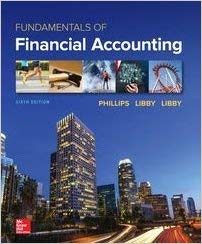Question
Ocean Carriers has a cost of capital of 9% (the discount rate for risky firm cash flows). The risk-free rate is 6% (the discount rate

Ocean Carriers has a cost of capital of 9% (the discount rate for risky firm cash flows). The risk-free rate is 6% (the discount rate for the risk-free cash flows).
You can assume that vessel scrap value is growing with the rate of inflation and the vessel is scrapped at the end of year 25. If the vessel is scrapped at the end of year 25, there is no need to undergo the special survey in year 25, so the final CAPEX is not required.
1. What is your qualitative projection for daily spot hire rates? Are they going to go up or down and why? What factors drive, in your opinion, the average daily hire rates?
- According to the case, there have been very few scrapings in recent years, with the current capacity of the worldwide fleet being fairly young. This can lead us to believe that the current and past demand for shipping capacity is high since newer vessels have recently been commissioned to be made. Additionally, vessels that are 15 years and older are still being used, which further indicates that demand is high as the use of older vessels beats the capital expenditure costs of preparing for special surveys.
- We can see by the current commission orders for capesize vessels by deliverable date that a high number of vessels are expected to be delivered in the next 2 years, with projections that are 3 years and out being single digit. Since most of Ocean Carriers' ships are 15 years or less of age, they will receive a market premium in daily spot hire rates.
- The production and commission for capesize vessels have increased, with the age of the current worldwide fleet being young. Additionally, current premium daily spot hire rates show the increased need and demand for capesize vessels. Daily hire rates for capesize vessels have dipped in past years, but have made a strong resurgence in the last year as spot rates have doubled. These factors lead us to believe that current market/economic conditions are strong, and that daily spot hire rates should continue to go up.
- Linn believes this herself, as she states that market conditions have been very strong historically, and she expects a 2% growth rate for the next 3 years, and a 1.5% growth rate after that.
2. Using information in Exhibit 6, calculate the cash flows from the ship operations over the useful life of the ship.
3. Should Ms Linn purchase the $39M vessel? Analyze the situation under different sets of assumptions (tax, vessel scrapping in year 15 or 25, securing contract or not).
a. First, assume that Ocean Carriers is a U.S. firm subject to 35% taxation.
b. Second, assume that Ocean Carriers is located in Hong Kong, where the owners of Hong Kong ships are not required to pay any tax on profits made overseas and are also exempt from paying any tax on profit made on cargo uplifted from Hong Kong.
c. Should the company scrap its vessels after 15 years or after 25 years? Why? What should be the fair resale value of the ship at the end of 15 years?
d. What is the NPV of buying a vessel if the Ocean Carriers does not secure a contract with a charterer?
the data is attached

Step by Step Solution
There are 3 Steps involved in it
Step: 1

Get Instant Access to Expert-Tailored Solutions
See step-by-step solutions with expert insights and AI powered tools for academic success
Step: 2

Step: 3

Ace Your Homework with AI
Get the answers you need in no time with our AI-driven, step-by-step assistance
Get Started


